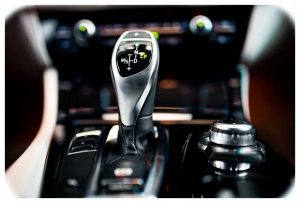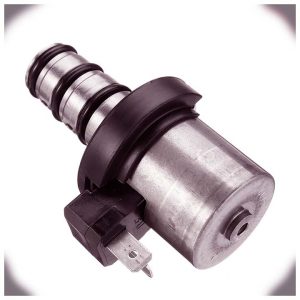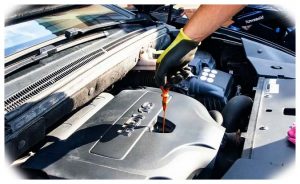Understanding why a car goes forward in reverse automatic is crucial for vehicle safety and maintenance. The issue may arise due to several reasons, such as low transmission fluid levels, worn transmission components, or faulty solenoids. Addressing the problem promptly and ensuring regular vehicle maintenance can help prevent this from happening.
When you put your car in reverse, it should go backwards. But some cars can be unexpectedly put into a forward motion in the reverse gear, known as “going forward in reverse automatic”. This issue can result from wear and tear on the car’s transmission components or low transmission fluid levels. Understanding what causes this problem and how it can be fixed is important.
How Automatic Transmissions Work

The Linkage and Transmission Control
The linkage and the transmission control unit play a pivotal role in the proper functioning of the transmission. If the shifter linkage is misaligned or broken, it can result in the car moving in the opposite direction than intended. Similarly, if the transmission control unit malfunctions, it can send incorrect signals to the gear selector, causing the car to go in reverse when you intend to shift into reverse. It’s crucial to verify the integrity of these components, especially if your car starts behaving abnormally.
Why Does My Car Go Forward in Reverse Automatic?
There are a few possible reasons why your car might be going forward in reverse automatic:
Low Transmission Fluid Levels: Low transmission fluid levels can cause the transmission to slip out of gear, resulting in the car going forward in reverse gear. Check your car’s transmission fluid level and top it off if necessary.
Worn or Damaged Transmission Parts: Over time, wear and tear on the components inside of your car’s transmission can cause them to fail, resulting in your car going forwards when you expect it to go backwards. This can be due to worn bearings, gaskets or shift forks within the transmission that needs to be replaced or repaired.

Malfunctioning Torque Converter: The torque converter helps transmit power from the engine’s crankshaft to its wheels by using hydraulic pressure and magnets. When these parts become worn or damaged, they can cause the transmission to slip, resulting in a car going forward in reverse automatic.
Sensor and Electronic Failures: Modern cars rely heavily on sensors to function correctly. A faulty sensor can misread or send incorrect data to the transmission control unit, causing the car to behave unexpectedly. Likewise, issues like a leak in the transmission fluid or an overheating alternator can influence the car’s performance.
Other Possible Causes: A few other possible causes of a car going forward in reverse automatic include faulty wiring, incorrect transmission fluid type or low engine oil levels.
Trouble Codes and Diagnostics
When the transmission behaves out of the ordinary, the car’s onboard computer often generates a trouble code. Using diagnostic tools, these codes can provide valuable insights into what might be going wrong. For instance, if the clutch is stuck, or there’s a problem with the transmission range, the system will generate specific codes to indicate these issues. It’s always a good idea to double check these codes with a professional mechanic or a trusted auto repair service.
Is It Safe to Drive with This Issue?
There are a few warning signs that you may experience if your car is going forward in reverse automatic. Strange noises coming from the transmission are often the first indicator, accompanied by jerking or slipping when shifting gears, and excessive vibration while driving. These symptoms are not only alarming but can be dangerous, indicating serious transmission issues that compromise the vehicle’s safety. Driving under these conditions is unsafe as it affects both the reliability and performance of your vehicle. If you encounter your car moving forward while set in reverse, it’s crucial to stop driving immediately and seek assistance from an experienced mechanic as soon as possible to address these potentially hazardous transmission problems.
How to Fix a Car That Goes Forward in Reverse Automatic?
The best way to fix a car that goes forward in reverse automatic is by addressing the underlying cause of the problem:

Repair or Replace Worn or Damaged Transmission Parts: If any parts within your transmission are worn or damaged, they should be replaced or repaired as soon as possible.
Replace Faulty Shift Solenoids: Your car’s shift solenoids may need to be replaced if they become faulty in order to ensure your car shifts properly.
Replace a Malfunctioning Torque Converter: A malfunctioning torque converter can also cause your car to go forward in reverse automatic and should be replaced if needed.
Other Possible Solutions: If none of the above fixes works, there could be other possibilities, such as faulty wiring, incorrect transmission fluid type, or low levels of engine oil, that need to be addressed by a professional mechanic. While addressing transmission concerns, consider enhancing your vehicle’s safety with the best brake pads for Jeep Wrangler, essential for peak braking performance.
Final Thoughts
The best way to prevent a car from going forward in reverse automatic is by regularly maintaining its transmission components and ensuring all fluids are at the correct level according to your vehicle’s manufacturer specifications. It is also important to remember that even with proper maintenance, wear and tear on parts over time can lead to this issue, so be sure to have your car checked regularly to ensure everything is in good condition.
It can be concerning if your car is going forward in reverse automatic. It is important to address the issue as soon as possible by determining the underlying cause and taking appropriate action, such as replacing worn or damaged parts, adding more transmission fluid, or replacing faulty solenoids. With proper maintenance and regular checks by a professional mechanic, you can help prevent this issue from occurring in the future. Always be informed and take the necessary precautions for the safety of yourself and others on the road.


Add Comment